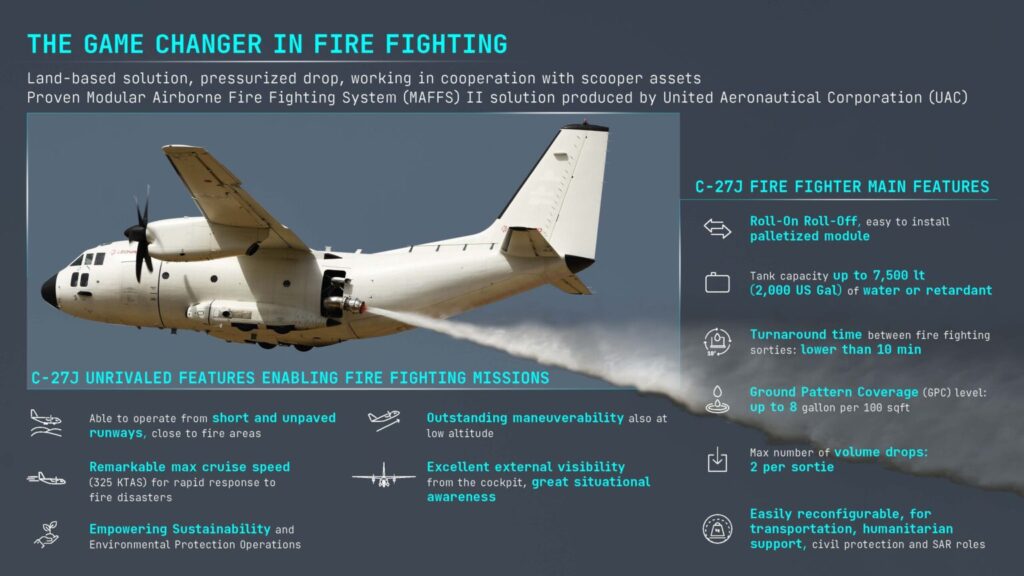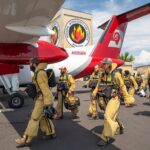
By: Bill Starks
Leonardo has unveiled its latest innovation for combating wildfires: the C-27J Next Generation “Fire Fighter.” This twin-engine turboprop aircraft is designed to elevate aerial firefighting operations by complementing helicopters and amphibious scooper planes with enhanced precision and operational efficiency. At its core is the advanced MAFFS II (Modular Airborne Fire Fighting System), a modular unit that can be installed or removed in just 90 minutes. This system includes a 7,500-liter tank that refills in under 10 minutes, paired with a fuselage-integrated nozzle for precise water or fire-retardant dispersal.
Leonardo’s commitment to environmental sustainability is evident in its choice of Phos Chek 259 FX, an eco-friendly fire retardant composed of ammonium polyphosphates. Commonly used in agriculture, this substance meets strict European safety standards, ensuring it is safe for humans, animals, and the environment. The C-27J seamlessly combines firefighting effectiveness with a sustainable approach, addressing modern ecological concerns.
Engineered for tough conditions, the C-27J “Fire Fighter” excels in low-altitude operations and adverse weather. With cutting-edge avionics, it achieves speeds of 325 knots (602 km/h) and features Short Takeoff and Landing (STOL) capabilities, enabling it to operate from semi-prepared runways near fire zones. This agility makes it indispensable in remote areas where water is scarce or seas are too rough for amphibious aircraft. Its pressurized delivery system disperses water-retardant mixtures at speeds of 130 knots (250 km/h), effectively covering wide areas and adapting to rugged terrain.

However, the C-27J’s capabilities extend far beyond firefighting. Its modular design allows for quick reconfiguration, making it suitable for disaster prevention, emergency response, humanitarian aid, and search-and-rescue missions. This versatility ensures year-round usability, offering operators a cost-effective and flexible solution for diverse challenges.
A recent demonstration in Italy showcased the aircraft’s capabilities during live firefighting drills at Taranto-Grottaglie and Manduria. These exercises underscored the MAFFS II system’s effectiveness and the C-27J’s operational readiness for high-stakes missions.
The Spartan continues to evolve as a tactical transport aircraft, boasting enhancements like advanced digital avionics, aerodynamic winglets, and an increased maximum takeoff weight of 32,500 kg. Its robust construction and redundant systems deliver exceptional reliability and performance, even in the harshest environments.
Powered by two turboprop engines, the C-27J combines unmatched versatility and operational efficiency. Its ability to operate on unpaved runways and withstand extreme temperatures from -55°C to +50°C makes it a dependable choice for challenging scenarios. With superior climb and descent rates, tactical maneuverability, and STOL functionality, the Spartan has earned its place as a leader in aerial firefighting, disaster response, and military transport. Trusted worldwide by civil and military operators alike, the C-27J Spartan exemplifies Leonardo’s dedication to innovation and mission success.










